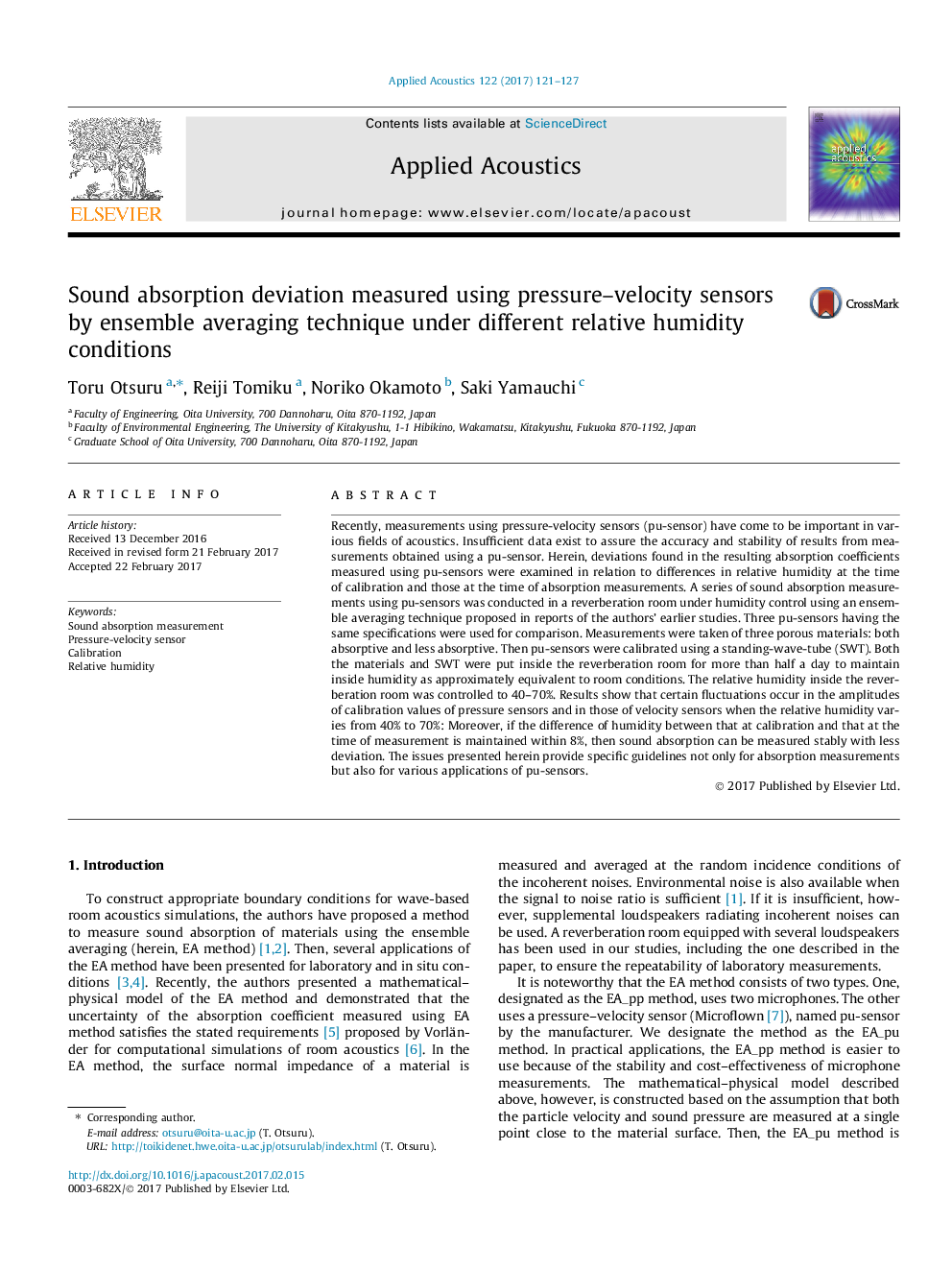| Article ID | Journal | Published Year | Pages | File Type |
|---|---|---|---|---|
| 5010725 | Applied Acoustics | 2017 | 7 Pages |
Abstract
Recently, measurements using pressure-velocity sensors (pu-sensor) have come to be important in various fields of acoustics. Insufficient data exist to assure the accuracy and stability of results from measurements obtained using a pu-sensor. Herein, deviations found in the resulting absorption coefficients measured using pu-sensors were examined in relation to differences in relative humidity at the time of calibration and those at the time of absorption measurements. A series of sound absorption measurements using pu-sensors was conducted in a reverberation room under humidity control using an ensemble averaging technique proposed in reports of the authors' earlier studies. Three pu-sensors having the same specifications were used for comparison. Measurements were taken of three porous materials: both absorptive and less absorptive. Then pu-sensors were calibrated using a standing-wave-tube (SWT). Both the materials and SWT were put inside the reverberation room for more than half a day to maintain inside humidity as approximately equivalent to room conditions. The relative humidity inside the reverberation room was controlled to 40-70%. Results show that certain fluctuations occur in the amplitudes of calibration values of pressure sensors and in those of velocity sensors when the relative humidity varies from 40% to 70%: Moreover, if the difference of humidity between that at calibration and that at the time of measurement is maintained within 8%, then sound absorption can be measured stably with less deviation. The issues presented herein provide specific guidelines not only for absorption measurements but also for various applications of pu-sensors.
Keywords
Related Topics
Physical Sciences and Engineering
Engineering
Mechanical Engineering
Authors
Toru Otsuru, Reiji Tomiku, Noriko Okamoto, Saki Yamauchi,
